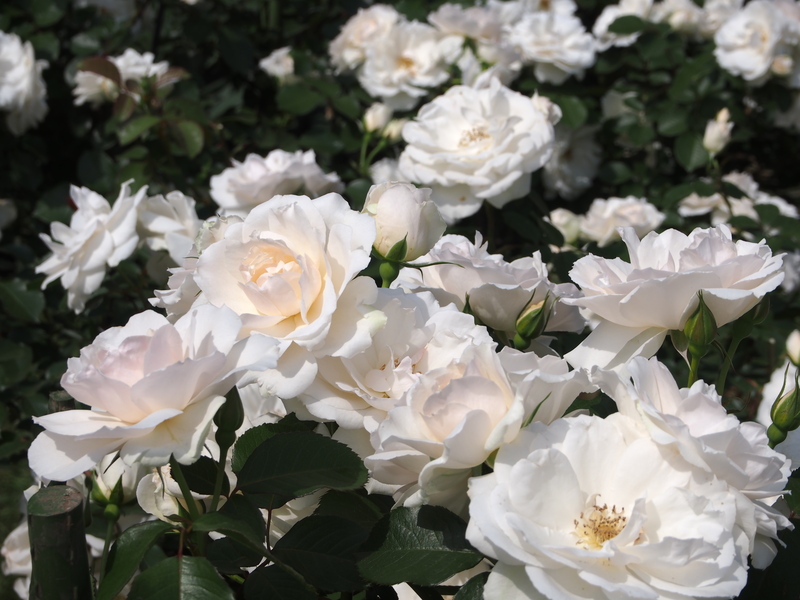Gardening tips and tricks for dog owners
Posted on 12/06/2025
Gardening Tips and Tricks for Dog Owners: Cultivating a Pet-Friendly Paradise
Do you dream of a lush, flourishing garden that both you and your furry friend can enjoy? You're not alone! Many passionate gardeners also share their yards with beloved dogs, which can sometimes be a unique challenge. Whether your canine companion is an energetic puppy or a seasoned digger, you can cultivate a beautiful, dog-friendly garden where both humans and pets thrive. This guide provides comprehensive gardening tips and tricks for dog owners, covering everything from safe plant selections to clever landscaping techniques for a harmonious outdoor space.
Why Special Gardening Strategies Are Important for Dog Owners
Gardening with dogs in mind is about more than preventing holes in your flower beds or muddy paw prints on your pathways. It's about creating a safe, enjoyable environment where your dog can explore, play, and relax without risking their health--or your hard work!
- Dogs are naturally curious creatures, often exploring the garden with noses and mouths.
- Certain plants and gardening products can be toxic to pets.
- Dogs may dig, chew, or trample your precious plants and lawn.
With thoughtful planning and a few smart strategies, you can have the best of both worlds: a thriving, beautiful garden and a happy, healthy dog.

Choosing Dog-Safe Plants for Your Garden
One of the foundational gardening tips for dog owners is to select plants that are non-toxic and safe for pets. Here's how to make informed choices:
Safe Plant Choices
- Marigolds - Bright and resilient, these offer pest-deterring properties.
- Calendula - Not only non-toxic, calendula even soothes minor skin irritations for pets.
- Snapdragons - Hardy and dog-friendly, perfect for bedding plants.
- Rosemary and Thyme - Most culinary herbs are safe for dogs and are aromatic additions to your yard.
- Sunflowers - Cheerful, tall, and pet-safe.
Plants to Avoid
- Oleander
- Azaleas and Rhododendrons
- Foxglove
- Daffodils and Tulips
- Sago Palm
- Lilies (especially for cats, but also best avoided for multi-pet households)
Always refer to the ASPCA or your local veterinary listings for a more comprehensive reference of dog-safe and dog-toxic plants.
Dog-Proof Landscaping Ideas
Landscaping doesn't have to sacrifice form for function. With a bit of creativity, you can incorporate dog-friendly features into your garden design:
Create Designated Digging Areas
If your pup loves to dig, redirect that energy! Designate a "dig zone" with loose soil or child-safe play sand. Bury dog toys or treats so your canine companion knows this is their special spot. This approach can save your flower beds from destruction.
Establish Clear Pathways
- Dogs are creatures of habit and often patrol the same routes. Install sturdy, curved pathways using materials like flagstone, brick, or mulch.
- Line paths with resilient, low-growing ground covers such as Irish Moss or Elfin Thyme that can tolerate light foot traffic.
Incorporate Shaded Resting Areas
All dogs need a cool, shady spot to relax in the garden. Provide shelter under trees, or use pergolas and doghouses. Strategically planting trees and shrubs can also create natural shading, improving both comfort and aesthetics.
Install Low, Decorative Fences
Use fencing, raised beds, or short barriers to protect sensitive or new plantings. Decorative fencing can prevent trampling without taking away from the visual appeal of your landscape.
Maintaining a Healthy Lawn with Dogs
A green, lush lawn is a goal for many gardeners, but dog urine, frequent running, and digging can present special challenges. Here are proven lawn care tips for dog owners:
Choose Hardy Grass Varieties
Opt for robust grasses like Ryegrass, Fescue, or Bermuda. These varieties tolerate wear and repair damage quickly, even in active yards.
Prevent Yellow Spots
- Rinse spots where your dog urinates with water soon after to dilute the nitrogen concentration.
- Designate a potty area with gravel or mulch to localize damage and make clean-up easier.
- Consider feeding your dog a well-balanced diet but avoid "magic" dietary supplements or salt blocks that promise to fix lawn burn--these can be harmful to your pet.
Patch and Repair Efficiently
Keep a small bag of lawn patch or seed mix on hand. Remove dead grass, loosen the soil, sprinkle the seed, and water well. New grass will sprout quickly in warm weather, restoring your yard's appearance.
Mulching and Ground Cover: Safe Choices for Dogs
Mulch helps retain soil moisture and discourages weeds but can be hazardous if your dog likes to chew or dig. Some mulches are dangerous for pets:
- Cocoa mulch (contains theobromine, toxic to dogs - never use!)
- Mulches that splinter, such as some pine or cedar chips, can cause injuries and stomach problems.
Instead, choose pet-safe mulching materials:
- Shredded hardwood (undyed, untreated)
- Pebbles or smooth river rocks
- Compost or leaf mold (in small, garden-only areas where dogs don't dig)
- Rubber mulch (if your dog doesn't chew it)
Protecting Your Garden from Canine Curiosity
Being proactive can prevent common landscaping headaches for dog owners. Follow these essential steps:
Hide and Secure Tools
Store sharp or potentially dangerous gardening tools out of your dog's reach. Hanging tools on high hooks or in secure garden sheds keeps both your equipment and your pet safe.
Use Raised Beds
- Raised beds keep delicate plants away from playful paws and noses.
- Elevated gardens make it less tempting for dogs to dig or walk through planting areas.
Natural Repellents
To keep dogs away from no-go areas, use safe, natural deterrents:
- Citrus peels - Many dogs dislike the smell of oranges and lemons.
- Vinegar spray - Mixed with water, it can deter digging or chewing, but use sparingly and only on non-edible plants.
- Commercial pet repellents - Ensure products are non-toxic and safe around both pets and plants.
Safe Pest and Weed Management in Pet-Friendly Gardens
Chemical pesticides, herbicides, and fertilizers can put pets at risk. Use natural gardening methods whenever possible. Here's how to tackle pests and weeds the safe way:
Natural Pest Control
- Attract beneficial insects like ladybugs and lacewings to reduce aphids and other pests naturally.
- Use neem oil and insecticidal soaps, which are typically safer for pets when used according to the label.
- Hand-pick larger pests like snails and beetles, or utilize barrier methods such as copper tape for slugs.
Weed Control
- Manually remove weeds or use heat-based weeders.
- Use corn gluten meal as a safe pre-emergent herbicide.
- Apply thick mulch to suppress weeds naturally.
Designing a Dog-Friendly Water Feature
Water features add tranquility to any backyard. If considering one, plan it with your dog in mind:
- Ensure ponds or fountains have shallow areas for dogs to drink safely.
- Install secure barriers around deep water to prevent accidental falls or unwanted swimming.
- Keep standing water clean to avoid mosquito breeding and algae, both of which can be hazardous for pets.
Creating Enrichment Opportunities for Dogs in Your Garden
A well-designed garden can become your dog's playground and stimulate their senses:
- Plant dog-friendly herbs like basil, mint, or oregano for scent enrichment and light snacking.
- Integrate agility features (low jumps, tunnels) for added fun and exercise.
- Provide interactive toys, sticks, or balls that are safe and easy to clean.
Common Mistakes Dog Owners Make in the Garden (and Solutions!)
- Ignoring toxic plant lists: Double-check all new plant purchases.
- Leaving gates or fences unsecured: Always inspect for possible escape routes.
- Applying chemicals during the day: Only use pet-safe gardening products and allow proper drying time before pets are allowed back.
- Underestimating chewing habits: Remove or block access to tempting but dangerous plants or decorations.

Year-Round Maintenance: Keeping Your Garden and Dog Safe
Each season brings unique gardening tasks and potential hazards for pets:
Spring
- Start seeds indoors to avoid curious noses in seed trays.
- Inspect fencing and gates for winter damage.
Summer
- Provide extra water and shade.
- Use organic mulch to prevent overheating around roots.
Fall
- Rake fallen leaves regularly to prevent mold (which can be unsafe for dogs to eat or play in).
- Overseed lawns to repair summer damage.
Winter
- Keep walkways clear of salt and ice-melters that are unsafe for paws.
- Store chemicals and fertilizers securely until next season.
Final Thoughts: Enjoy Your Pet- and Plant-Friendly Space
With these gardening tips and tricks for dog owners, you can confidently cultivate a pet-friendly garden that serves as a safe retreat for both you and your dog. By selecting non-toxic plants, employing smart landscaping, and practicing safe gardening habits, you're setting the stage for years of outdoor enjoyment together. Embrace the process, get creative, and remember: your garden can flourish--and so can the special bond with your four-legged friend!



